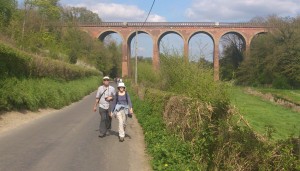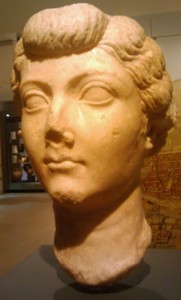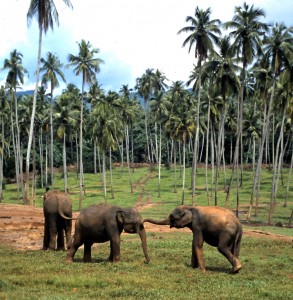Which has revived my Trans-Siberian rail journey dreams – seems a good reason to go to Vladivostok.
p. 63 “What an enthralling place, I thought where humans, Amur tigers and Blakiston’s fish owls move past one another in a matter of hours. I wasn’t worried about this tiger: I’d been working in their habitat for years and trusted them to be farmless to humans if respected. Or at least as harmless as a massive carnivore can be. “Siberian” tiger is a misnomer: there are no tigers in Siberia. Rather, since these animals live in the Amur River basin, east of Siberia, the name “Amur” tiger is more accurate.”
p. 152 “This was the last evidence of the village of Ulun-ga, an Old Believer settlement liquidated by the Soviety government in the 1930s. At one point there were at least 35 Old Believer settlements north of Amgu along, five times as many villages as there are in that same space today. The Old Believers had come to Primorye to escape czarist oppression and were not abou to bend a pious knee to a devil like Iosid Stalin and his plans for collectivization. In the resulting unrest, some Old Blievers were executed while hundreds more were arrested, hailed or deported.”
p. 141 “I walked straight across the floodplain, which seemed primeval and was breathtaking in its beauty. The trunks of poplars, elms, and pines rose to form a tall canopy, their bases hidden by the green understory and rutted by bubbling streams and pools populated by schools of masu salmon, white-spotted char, and lenok. There was ungulate sign everywhere, mostly of wild boar… and the carcass of a Ural owl likely killed by a mountain hawk eagle: I found an eagle feather among the owl remains like a macabre calling card. The mountain hawk eagle was an enormous raptor that quietly colonized Primorye from Japan sometime in the 1980s”.
p. 186 “I stared into the enormous yellow eyes of this magnificent bird. How was the fish owl going to behave in hand? Some raptors are docile while others, like falcons, twitch and fight the whole time when restrained. Bald eagles stretch their long necks to snap intimidating beaks at their captor’s jugular vein, as it aware that the right snip would reduce their abductor to a panicking volcano of blood. I’d found no written accounts of handling a wild adult fish owl, and even Surmach hadn’t held an adult before.”
p. 284 “At one point I saw two fish about half a meter long hiding under a submerged log in a deep pool… this species was new to me. I poppsed up just as a fisherman was walking by in a camouflage jacket and hop waders, smoking and carrying a fishing pole. He was trying his best to ignore me. “Hey,” I called out in Russian. “What’s a fish about yea big, silvery and with small black spots?” “Lenock, of course,” he answered impassively and without stopping, as though he often fielded pop quizzes on fish identification from lurking foreigners in wet suits.”
p. 292 For nesting, our data showed that big trees really were the best descriptors of a fish owl nest site; it didn’t matter too much what else was around… The river data gave us more unexpected results. They showed that fish owls tended to hunt in locations that had old-growth trees near the rivers themselves.. it wasn’t so much the owls that needed big trees; it was the salmon. When a small tree falls into a big river … it typically flows with the current without fanfare. Conversely, when a large tree falls into a small waterway, or narrow channel, the water notices.. Where there might have been a single, uniform channel before an old-growth tree fell into the water, its incluence can catalyse the development of an aquatic tapestry of deep pools, backwaters, and shallow, rushing water. This diversity of river habitats is exactly what salmon look for.”
p. 300 THe following year, the logging company widened the muddy rutted road leading up from the Sha-Mi River in anticipation of harvesting trees from the upper reaches there. The improved surface meant people could drive faster along it, and in 2012 an Amgu local found a dead fish owl next to the road. His photographs of the leg band showed that this was the Sha-Mi female, and that her injuries were consistent with a vehicular strike. She may have been safe from me, but she could not escape the march of human progress I was trying to shield her from.”
p. 308 We began working with the logging compnies in 2012 to limit the number of forest roads left accessible to vehicles after the companies are done logging an area. … In 2018 alone, five logging roads were closed… limiting human access to 212 sq km of forest. This benefitted the bottom line of logging companies by preventing illegal logging and also protected fish owls, tigers, nears and Primorye’s biodiversity in general.
In 2015, after being unable to find a suitable nest tree at the Saiyon territory when our last one was felled in a storm, Sergey and I borrowed a strategy from our colleagues in Japan and erected a nest box. We used a plastic 200L barrel that once contained soybean oil, cut a hole in the side, and secured it eight meters up a tree near the Saiyon River. The pair found it in less than two weeks and have fledged two chicks there, one in 2016 and another in 2018. We have since expanded this project to about a dozen other patches of forest
We have been able to update global population estimates. While in the 1980s there were believed to be 300 to 400 pairs, our analysis suggests there are likely to be more, perhaps twice as many … many of them (186 pairs) in Primorye.If we take the owls in Japan into consideration, and allow for a few pairs hiding in the Greater Kingan Range of China, we believe that the global population of Blakiston’s fish owl is fewer than 2,000 individuals.”
Video of the book launch, and of course of the owl (in Japan, different sub-species)





 About
About